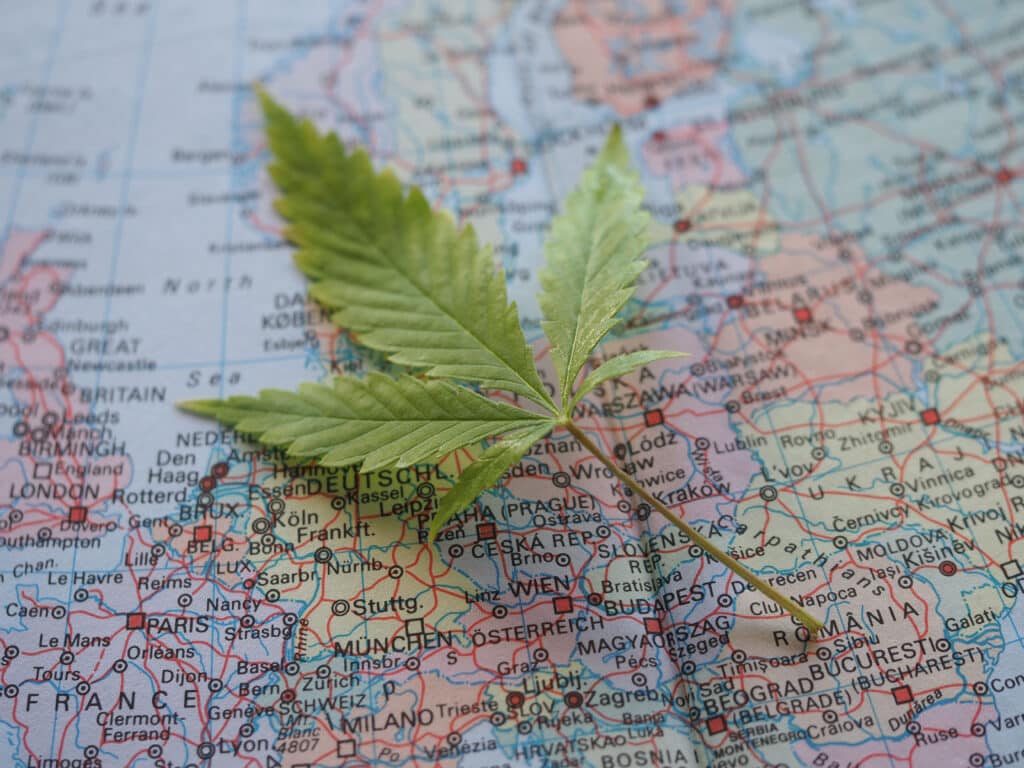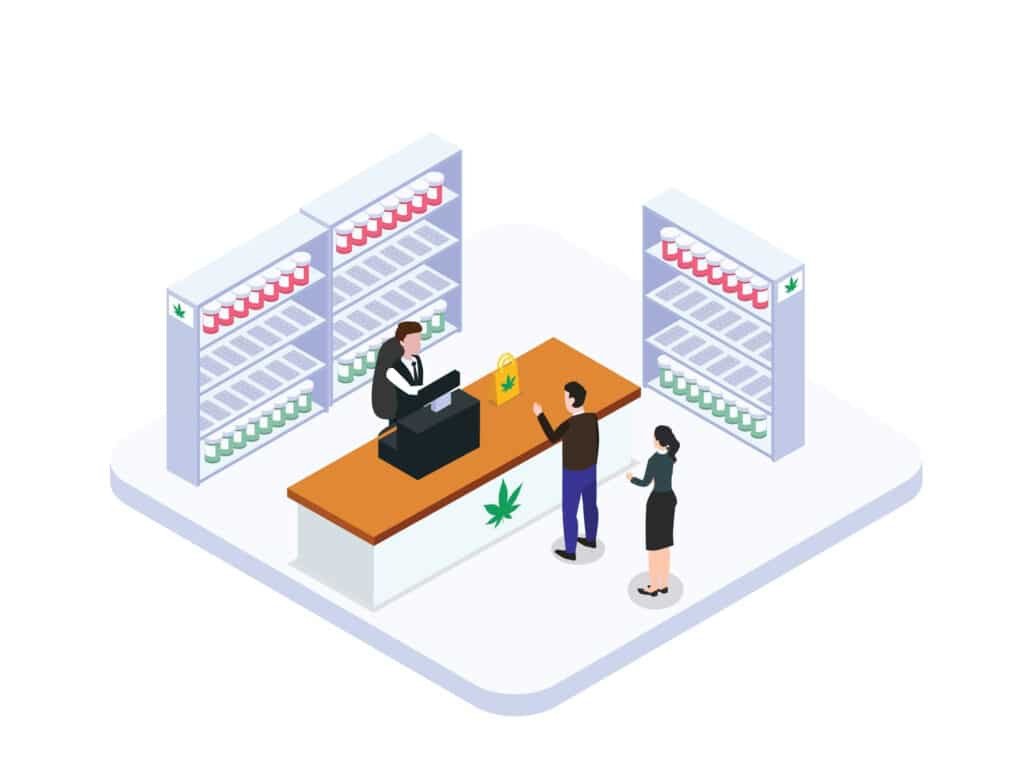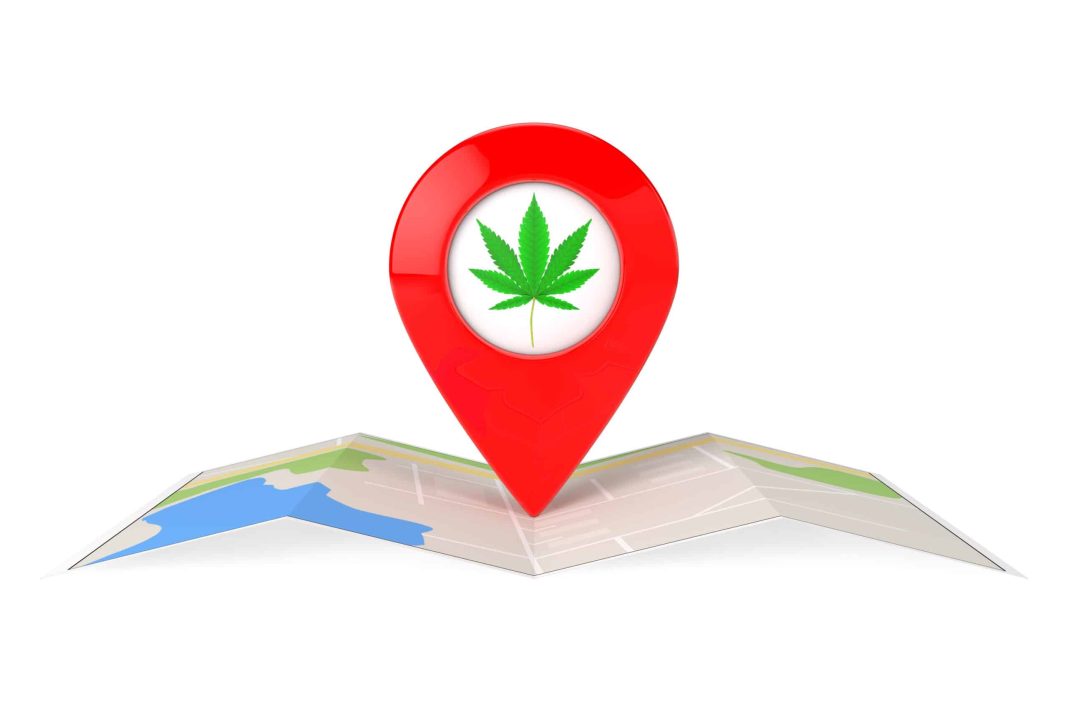The question for every store out there, is how to get people in. What encourages a person to pick one option over another? Or one location over another? A recent Canadian study seeks to shed light on the importance of proximity for dispensary sales; by investigating where residents buy weed, and their physical distance to legal cannabis stores.
Weed study on proximity to dispensary & buying
There are a lot of times in life when something is wanted, but the desire to get up and get it, isn’t there. This can be as simple as not wanting to get off the couch to walk to the refrigerator. Other times, the desire to move is there, but only for the bare minimum. For example, you’re hungry, but there’s only pizza within a mile of your house. You choose the pizza because of proximity; since the better options are several miles away. Convenience is a thing. Buying weed from a dispensary employs the same concept; and proximity plays a part here as well.
The study in question is called Proximity to legal cannabis stores in Canada and use of cannabis sources in the first three years of legalization, 2019-2021, and was performed by the Canadian Centre of Substance Use and Addictions, in Ontario. It was published in June of 2023, in the Journal of Studies on Alcohol and Drugs.
The study’s three aims were to assess proximity of study participants to a legal cannabis dispensary; to assess the different sources that each participant used in the past year – both legal and illegal, to procure their weed; and to assess if any association exists between the proximity of respondents to a legal retail store, and the method used to procure the weed.
The study used all Canadian respondents, all of whom were already participating in the International Cannabis Policy Study, between 2019-2021. Over 15,000 participants used cannabis within the past 12 months in the study. All were legal adults.
What the study found
The investigation started in 2019, and ended in 2021. This is important because many dispensaries opened up in that time. There was changing proximity to the closest location for many people; in 2021, many more respondents lived closer to a legal dispensary, than in 2019. On average, a respondent lived about 1.5km away by 2021, while in 2019, people were more like 6.8km from their closest legal weed store.
In 2019, respondents less frequently bought from legal stores; only about 38.6% of the time. In 2020 this was up to about 47.9%, and in 2021, to 60%. Accordingly, there were lower odds of using black market sellers in 2020 and 2021 – down to 22.6% and 19.9% respectively; from 29.1% in 2019. It was found that participants who lived in close proximity to legal dispensaries, were more likely to buy their weed legally. They were also less likely to buy from legal websites, or cultivate their own product.
What does ‘close proximity’ mean in this study? There is no specifically defined answer to this in life, or by the study parameters. However investigators found that the association between distance to a legal weed dispensary, and making legal purchases; dropped off at about 3km.
Concluded the authors of the study: “Legal cannabis stores are increasingly accessible to people living in Canada three years after legalization… Findings suggest that proximity to legal cannabis stores may aid uptake of the legal market yet there may be diminishing returns after a certain point.”
What can we get out of this study?
It’s actually a pretty obvious understanding in the end. If something is accessible, people are more likely to do it. Distance can be more of a factor, than other things like legality, or even quality of options. The study also shines a light on how big the black market is. Even in 2021, according to survey results, the odds were that 60% of the time an adult would buy legally, and that nearly 30% of the time, people were buying from illegal vendors.

60% actually isn’t that bad, considering that prior to the market opening in 2019, all sales were black market. It means that according to the study results, Canada’s legal market diverted quite a chunk to the legal side; which is bigger than the black market. There’s also been an increase from year to year, which means expansion of the legal industry.
One reality, however, is that governments maintain the goal of getting every percentage point possible, as governments don’t earn taxes on black markets. Illegal dispensaries and dealers represent lost income to government bodies, so they prefer 100% (or close to it) gets diverted to a legal, taxable market. As such, if ~40% were not legal market consumers in 2021; a study like this helps to elucidate why that might be, and how to increase numbers.
As per study findings, those who lived in closer proximity to a legal store, were associated with buying legally; so long as the dispensary was within about 3km. This indicates that if regulators want more legal purchases; they need to make sure there are a lot of dispensaries in convenient locations. If these are more convenient that other options, it might help to get more sales.
Do people know if they’re buying from an illegal dispensary?
One of the problems with this study, is that it’s not always obvious if the dispensary a person is buying from, is legal or not. It’s one thing to buy from a street dealer, everyone knows this is a black market transaction. But most illegal dispensaries mimic legal dispensary setups, making it difficult for consumers to know they’re buying illegally. Prices can vary in general, so even price is not immediately an elucidating factor.
There are some ways to help establish if the dispensary is on the up and up. A few good pointers are if they check your ID at the door; if they don’t sell edibles with over 10mg of THC (or whatever the state/federal limit is); or if they don’t have products that look exactly like known products, but with THC in them (generally edibles). However, none of these things alone indicate anything, necessarily; and illegal dispensaries can mimic these requirements anyway.
Illegal dispensaries aren’t hidden in backwoods. They’re often in very conspicuous places, like the Las Vegas strip. Expecting consumers to know when they’re buying legally, is out of the question at this point. Not only does it probably not matter to some participants which dispensary they go to (legal or not); but a good percentage won’t recognize the difference. Especially when going to places outside a home environment. It’s quite possible that participants associated black market purchases with dealers mainly, and not with brick-and-mortar stores.

What does this say about the study? I expect it means the illegal sales are higher than reported, and the legal sales are lower, although I cannot say to what degree. For a consumer, there is often an assumption that if the store is there and selling cannabis products, it must be legal. However, from my experience, most people have literally no clue if they’re in a legal location or not. Which means, in these instances, survey data likely gives the wrong impression; because its asking people to report on something that they don’t understand.
Beyond not knowing, there’s also not caring. For many consumers, it doesn’t matter if a dispensary is legal or not. Flower is flower, and you can get all ranges of quality at legal or illegal dispensaries. Illegal dispensaries offer comparable products much of the time, and many consumers are happy enough going where its more convenient, and lower-priced. Under this assumption, the most important thing is having a legal option available, and conveniently located.
The study showed a drop off in association at around 3km, between distance to a legal seller, and buying legally. Maybe this drop off is true of many products and services; and speaks to our desire to keep things local when we can. It also might apply to all dispensaries, legal or not. The study only investigated it with the legal locations; but it could simply be a statement about proximity in general. Especially if the clientele doesn’t know the difference. As of right now, this is an unanswered question.
Conclusion
How much does proximity matter when picking a dispensary? According to this study, it’s important to a point; like within 3km. Overall it shows that people want convenience, and that the closer they are to something; the more likely they are to use it as an option.
Hey there readers! Thanks for being with us at Cannadelics.com, an independent news source reporting on the cannabis and hallucinogen landscapes. Best to come around regularly for updates; and subscribe to our Cannadelics Weekly Newsletter, for all the best product promotions, along with the news.





